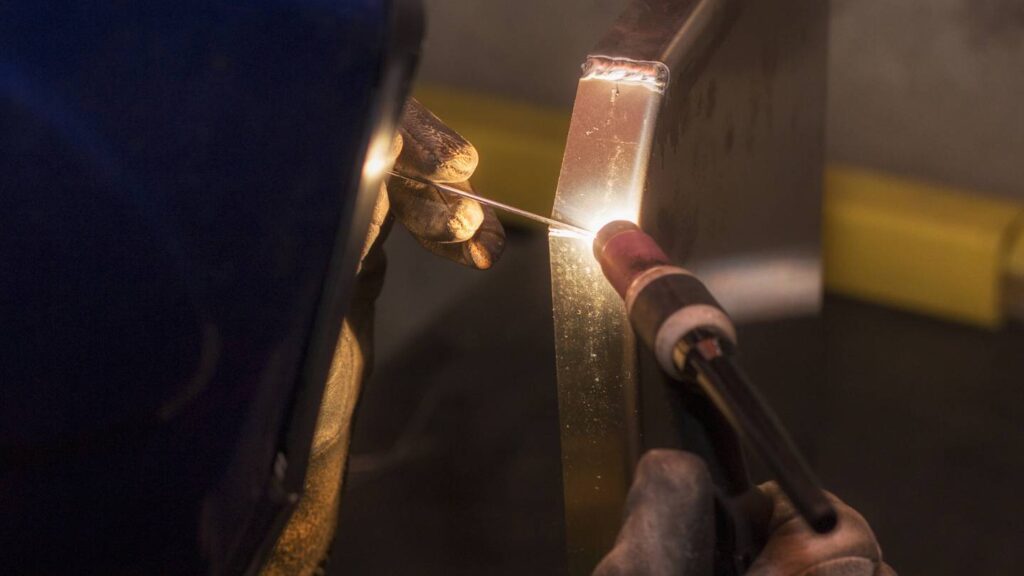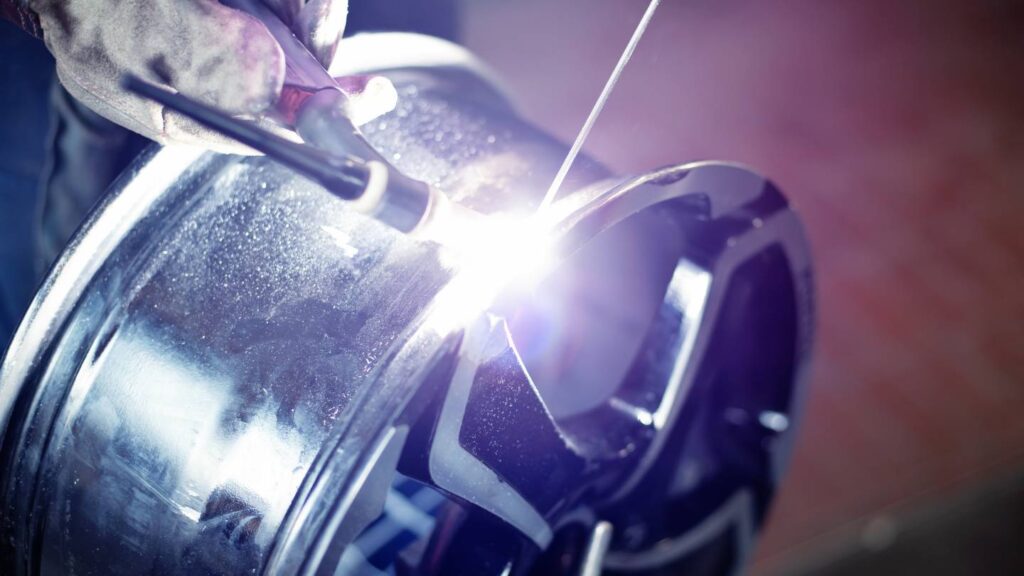Aluminium fabrication plays a key role in modern manufacturing. This lightweight, durable, and versatile metal is widely used across various industries, including automotive, aerospace, electronics, and construction.
Different methods are employed to shape aluminium into the desired forms for specific applications. Understanding these methods is essential for selecting the right approach for any project.
Let’s get straight to the point
Aluminium fabrication involves various techniques like extrusion, casting, rolling, and forging to shape aluminium for different industrial applications. Extrusion is ideal for creating long, continuous shapes.
Casting is used for intricate designs, rolling produces sheets and foils, and forging enhances strength and durability. The choice of method depends on factors like design complexity, production volume, required material properties, and cost.
Additional techniques like cutting, bending, and welding further refine aluminium products. Selecting the right fabrication method ensures optimal performance, quality, and cost-efficiency in manufacturing.

What is Aluminium Fabrication?
Aluminium fabrication refers to the processes used to shape aluminium into specific forms. These techniques can involve physical deformation, such as bending and rolling, as well as methods like extrusion and casting. Each approach has its own advantages and is suited to particular applications.
Why Aluminium?
Aluminium is widely favoured in many industries due to its unique properties. It is lightweight, resistant to corrosion, and has a high strength-to-weight ratio. Additionally, aluminium is highly recyclable, making it an environmentally friendly choice for manufacturing.
Common Aluminium Fabrication Methods
1. Aluminium Extrusion
Aluminium extrusion is a popular method for creating long, continuous shapes with a consistent cross-section. The process involves heating an aluminium billet and forcing it through a die, which results in the desired shape.
How Does Extrusion Work?
The extrusion process begins with an aluminium billet, which is heated to make it malleable. The heated billet is then pushed through a die using a hydraulic press. The die determines the cross-sectional shape of the extrusion. After extrusion, the aluminium is cooled and cut to the required length.
Advantages of Aluminium Extrusion
- Versatility: Extrusion allows for the creation of complex shapes with precise dimensions.
- Cost-effectiveness: It is economical for large production runs, reducing waste and material costs.
- Surface Finish: The extrusion process produces a smooth surface, which is ideal for further finishing processes like anodising or painting.
Applications of Aluminium Extrusion
- Architectural: Window frames, door frames, and decorative trims.
- Automotive: Roof rails, structural components, and bumper systems.
- Electronics: Heat sinks and enclosures.
- Aerospace: Structural components and support frameworks.
2. Aluminium Casting
Aluminium casting is a method used to create complex shapes by pouring molten aluminium into a mould. This process is ideal for producing parts with intricate details.
How Does Casting Work?
In casting, aluminium is melted and poured into a mould, which can be made of various materials, including sand, metal, or ceramic. The molten aluminium takes the shape of the mould as it cools and solidifies. Different casting methods, such as die casting, sand casting, and permanent mould casting, are used based on the complexity and size of the part.
Advantages of Aluminium Casting
- Complexity: Casting allows for the production of highly intricate shapes that would be difficult or impossible to achieve through other methods.
- Material Efficiency: Casting minimises material waste, making it a cost-effective option for large-scale production.
- Scalability: Suitable for both low and high-volume production.
Applications of Aluminium Casting
- Automotive: Engine blocks, transmission housings, and brackets.
- Electronics: Enclosures and cooling components.
- Telecommunications: Infrastructure components and housings.
3. Rolling Aluminium
Rolling is a fabrication method used to produce aluminium sheets, plates, and foils. This process involves passing aluminium slabs through rollers to reduce their thickness.
How Does Rolling Work?
Rolling aluminium involves feeding slabs or billets through a series of rollers that progressively reduce their thickness. The final product can vary in thickness from thick plates to thin foils, depending on the application. Rolling can be done at room temperature (cold rolling) or at elevated temperatures (hot rolling).
Advantages of Rolling Aluminium
- Versatility: Rolling produces aluminium in various thicknesses, making it suitable for a wide range of applications.
- Surface Quality: The rolling process results in a smooth, uniform surface that is ideal for further processing or finishing.
- Scalability: Rolling is efficient for producing large quantities of aluminium sheets and foils.
Applications of Rolled Aluminium
- Aerospace: Aircraft skins, fuselage panels, and structural components.
- Packaging: Beverage cans, food containers, and household foil.
- Construction: Roofing, cladding, and gutters.
4. Forging Aluminium
Forging is a fabrication process that involves shaping aluminium by applying compressive forces. This method is known for producing parts with high strength and durability.
How Does Forging Work?
In forging, aluminium is heated and then shaped by hammering or pressing it into the desired form. There are two main types of forging: open-die forging and closed-die forging. Open-die forging allows the aluminium to expand freely as it is shaped, while closed-die forging uses a mould to control the final shape.
Advantages of Forging Aluminium
- Strength: Forging enhances the mechanical properties of aluminium, making the final product stronger and more durable.
- Customisation: The process allows for the creation of parts with specific mechanical properties tailored to high-stress applications.
- Material Integrity: Forging improves the grain structure of the aluminium, resulting in a more robust final product.
Applications of Forged Aluminium
- Automotive: Wheels, pistons, and connecting rods.
- Aerospace: Landing gear components, gears, and structural parts.
- Tools and Equipment: Wrenches, hammers, and pliers.
Choosing the Right Aluminium Fabrication Method
Factors to Consider
When selecting the appropriate aluminium fabrication method, several factors must be considered:
- Complexity of Design: The complexity of the part design will influence the choice of fabrication method. For example, casting is better suited for intricate shapes, while extrusion is ideal for simpler profiles.
- Production Volume: The quantity of parts required will affect the decision. High-volume production may benefit from methods like die casting or rolling, which are more efficient for large runs.
- Material Properties: The mechanical properties needed for the final product, such as strength, durability, and surface finish, will guide the selection process.
- Cost: Budget constraints play a significant role in choosing a fabrication method. Extrusion and rolling are generally more cost-effective for large quantities, while forging may be more expensive but necessary for high-stress applications.
Matching Fabrication Methods to Applications
It is essential to match the fabrication method to the specific application to ensure optimal performance and cost-efficiency.
- Extrusion: Best for creating long, continuous shapes with a consistent cross-section, such as architectural components and structural parts.
- Casting: Ideal for producing complex, detailed shapes in both low and high-volume production runs.
- Rolling: Suitable for manufacturing aluminium sheets, plates, and foils used in packaging, aerospace, and construction.
- Forging: Chosen for applications that require high strength and durability, such as automotive and aerospace components.

Additional Aluminium Fabrication Techniques
In addition to the primary methods discussed, there are several other techniques used in aluminium fabrication:
1. Cutting Aluminium
Cutting is an essential step in aluminium fabrication, used to trim extrusions, sheets, and plates to the required size.
Common Cutting Techniques
- Sawing: Using saws with specialised blades designed for cutting aluminium.
- Laser Cutting: Employing lasers to make precise cuts in aluminium sheets and plates.
- Waterjet Cutting: Using high-pressure water mixed with abrasive particles to cut through aluminium without generating heat.
2. Bending Aluminium
Bending is a method used to shape aluminium by applying force to make it conform to a specific angle or curve.
Common Bending Techniques
- Press Brake Bending: A press brake machine applies force to bend aluminium sheets and plates to the desired angle.
- Roll Bending: This technique uses rollers to curve aluminium into rounded shapes.
3. Welding Aluminium
Welding is a process used to join aluminium parts by applying heat to melt and fuse them together.
Common Welding Techniques
- TIG Welding: Tungsten Inert Gas (TIG) welding is often used for welding aluminium due to its precision and control.
- MIG Welding: Metal Inert Gas (MIG) welding is faster and is suitable for thicker aluminium sections.
Conclusion
Aluminium fabrication is a versatile and essential process in modern manufacturing. By choosing the right method—whether extrusion, casting, rolling, or forging—manufacturers can ensure that their aluminium parts meet the required specifications for strength, durability, and cost-effectiveness.
Each method has its strengths, making it suitable for specific applications and industries. Understanding these fabrication techniques allows for informed decisions, ensuring that the final product not only meets but exceeds expectations in performance and quality.

